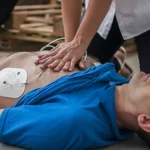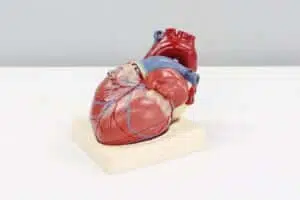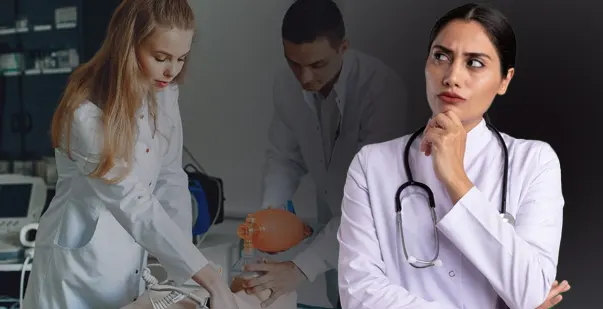Every year, hundreds of thousands of lives are lost to cardiac arrest in the United States alone. Since so many of these emergencies occur outside of a hospital, far from medical personnel, many victims do not survive. However, there are steps you can take to reduce this tragic number. By becoming trained and certified in CPR, you can effectively respond to a cardiac arrest emergency and dramatically increase the survival rate of cardiac arrest victims.
However, many people don’t realize that CPR is effective for responding to a variety of medical emergencies, and not just cardiac arrest. In the event that a victim cannot breathe or their heart has stopped, CPR can improve their survival rate. In this blog, we’re looking into different medical emergencies where performing CPR can be beneficial. In addition to cardiac arrest, CPR can also help victims of near-drowning, electrocution, smoke inhalation, and more.
At American Health Care Academy, our team is dedicated to providing accessible and high-quality CPR training and certification. With our innovative approach to CPR training via our 100 percent online courses, it’s never been a better time to learn this life-saving skill. And it’s never been easier. Many of our students even earn their certification within a matter of days. By learning CPR online, you’ll gain the skills, knowledge, and confidence to make a positive impact on your community. And in the event of a medical emergency, you could even save someone’s life.
What is CPR?
CPR, or cardiopulmonary resuscitation, is an important life-saving procedure that is easy to learn. CPR essentially helps keep blood, oxygen, and nutrients circulating throughout the body when the heart is unable to do so. Chest compressions keep the circulation functioning for the body and rescue breaths inject oxygen directly to the lungs.
CPR is not only for cardiac arrest victims
While CPR is an effective response for victims of cardiac arrest, this procedure can be used for many other medical emergencies. So, to answer the question, no, CPR is not only for cardiac arrest victims. It is commonly used for this medical emergency, in part because there are so many occurrences of cardiac arrest.
Read on to learn about other medical emergencies where CPR could help to save a life.
What Other Medical Emergencies, CPR Can Be Performed?
In addition to cardiac arrest, CPR can also be used in these medical emergencies:
1. Electrocution: if you come into contact with a high-voltage circuit, such as when you’re working with electrical equipment or wiring, many serious health risks can occur. An electrical shock can cause muscle pain, burns, seizures, heart rhythm problems, or even cardiac arrest. If someone has been electrocuted, performing CPR or using an AED can be effective until medical help arrives.
2. Heart attacks: while heart attacks are different from cardiac arrest episodes, CPR can still be useful. In the event of a heart attack, you should only perform CPR if the heart attack itself causes the person to go into cardiac arrest and their heart stops functioning. If it’s just a heart attack, loosen their clothing, try to help them calm, and give them an aspirin that can break up the blood clot causing the heart attack.
3. Near-drowning events: CPR can be used effectively in near-drowning events. Due to the unique circumstances of near-drowning, AHA guidelines recommend that you begin with two rescue breaths and then administer chest compressions. In these emergencies, the victim may vomit back up the ingested water, so you should turn the victim on their side to help clear the airway.
4. Poisoning: if someone ingests a poisonous substance, they’ll need medical assistance immediately. After calling 911, check for signs of life, such as moving or breathing. If you cannot detect a breath, begin performing CPR.
5. Smoke inhalation: heavy smoke inhalation, such as when someone is caught in a fire emergency – can cause severe coughing, shortness of breath, eye and skin damage, or even cut off their airway and breathing. In the event of smoke inhalation, remove the victim from the smoke-filled area and check their breathing and airway. If you cannot detect a steady breath, begin CPR immediately.
6. Choking: choking is a common health risk that is especially common in small children and blocks off the airway. While chest compressions and rescue breaths may not be the most effective methods for relieving a choking incident, checking the airway can help you identify choking. After, you can dislodge the object from the victim’s airway.
The Benefits of Online CPR Certification
To ensure you receive the most updated and accurate information and training, it’s essential for bystanders to earn their CPR certification. And now, it’s easier than ever to learn this important skill and earn your CPR certification. With online CPR certification classes, you can learn at your own pace and even from the comfort of your own home. This means you’ll never have to worry about driving to a crowded rec center after work to learn CPR. Online CPR certification is designed to fit your schedule and your learning style.
Here are just a few reasons why so many students love online CPR training:
· Convenience.
· Earn your CPR certification within just days.
· Learn at your speed.
· Start and stop your classes whenever you need.
· Learn from the comfort of your own home.
· Instantly print off your CPR certification card.
Conclusion
CPR is an important medical procedure that almost anyone can learn. By performing a combination of chest compressions and rescue breaths (or even just chest compressions with hands-only CPR) you can dramatically improve the survival rate of a cardiac arrest victim. But that’s not all CPR is beneficial for.
CPR can be used to respond to various medical emergencies. You should perform CPR in any instance when the victim cannot breathe or their heart has stopped. This can include incidences of electrocution, near-drowning, smoke inhalation, drug overdoses, or even poisoning. Of course, it’s always essential to call 911 first so that paramedics will be on the way. No matter the medical emergency, CPR is to be used as a temporary measure to stabilize the victim. This procedure does not treat these medical emergencies.
For well over a decade, the professionals at American Health Care Academy have trained and certified over 700,000 students in CPR and other medical procedures and certifications. In addition to our CPR certification classes, we also offer high-quality training in First Aid, bloodborne pathogens, healthcare-oriented CPR, and even combination CPR/AED courses that teach you how to safely operate an AED. With our convenient and affordable online CPR classes, it’s never been easier to learn how to safely and effectively perform CPR. You never know when or where a medical emergency may strike. By earning your CPR certification, you can at least be prepared.
Contact us to learn more about our complete catalog of online medical training courses. You can also call us at 1-888-277-7865 to speak with a member of our team for more information about our certification courses. We look forward to working with you soon.













